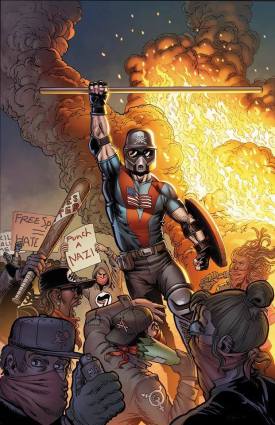[The following piece was originally published at MartinLund.me and it is reposted here with the author’s permission.]

Is It a Thing? “Pantheonic Bricolage.”
If you are at all familiar with my work, you know that I have a particular interest in the intersections between comics and religion. I have spent countless hours studying comics in relation to Judaism and Jewishness, on editing a book about Muslim superheroes (the release of which is so close now I can almost taste it!), and I’m currently drafting a book about the recently deceased evangelical comics propagandist Jack T. Chick (about whom I have written here and here).
In addition to this, I’m also working on a guide to comics and world religions with a couple of fellow scholars of the topic. We have hashed out a rough structure and are working separately on our chapters. In addition to writing about the Abrahamic traditions (Judaism, Christianity, and Islam), I will also be tackling what we have chosen, for now, to call “Archaic Traditions.” (I just might make another “Is it a thing?” post about that label somewhere down the line.)
This means that I am writing about Greco-Roman, Egyptian, and Old Norse religions. And I am loving it to no end. There is so much interesting material to work with here, and I will be sharing thoughts and reviews as things progress.
But for now, I want to bounce a thing off the internet and see what happens.
I want to talk about what I have been calling, for lack of a better term: “pantheonic bricolage.” It sounds complicated, but it really isn’t.
Continue reading Martin Lund on the Possibilities of “Pantheonic Bricolage”


 If you missed this year’s Free Comic Book Day, then you likely didn’t hear about
If you missed this year’s Free Comic Book Day, then you likely didn’t hear about 





 Today [Thursday] there is a comics panel at 12:30 in 24abc called
Today [Thursday] there is a comics panel at 12:30 in 24abc called